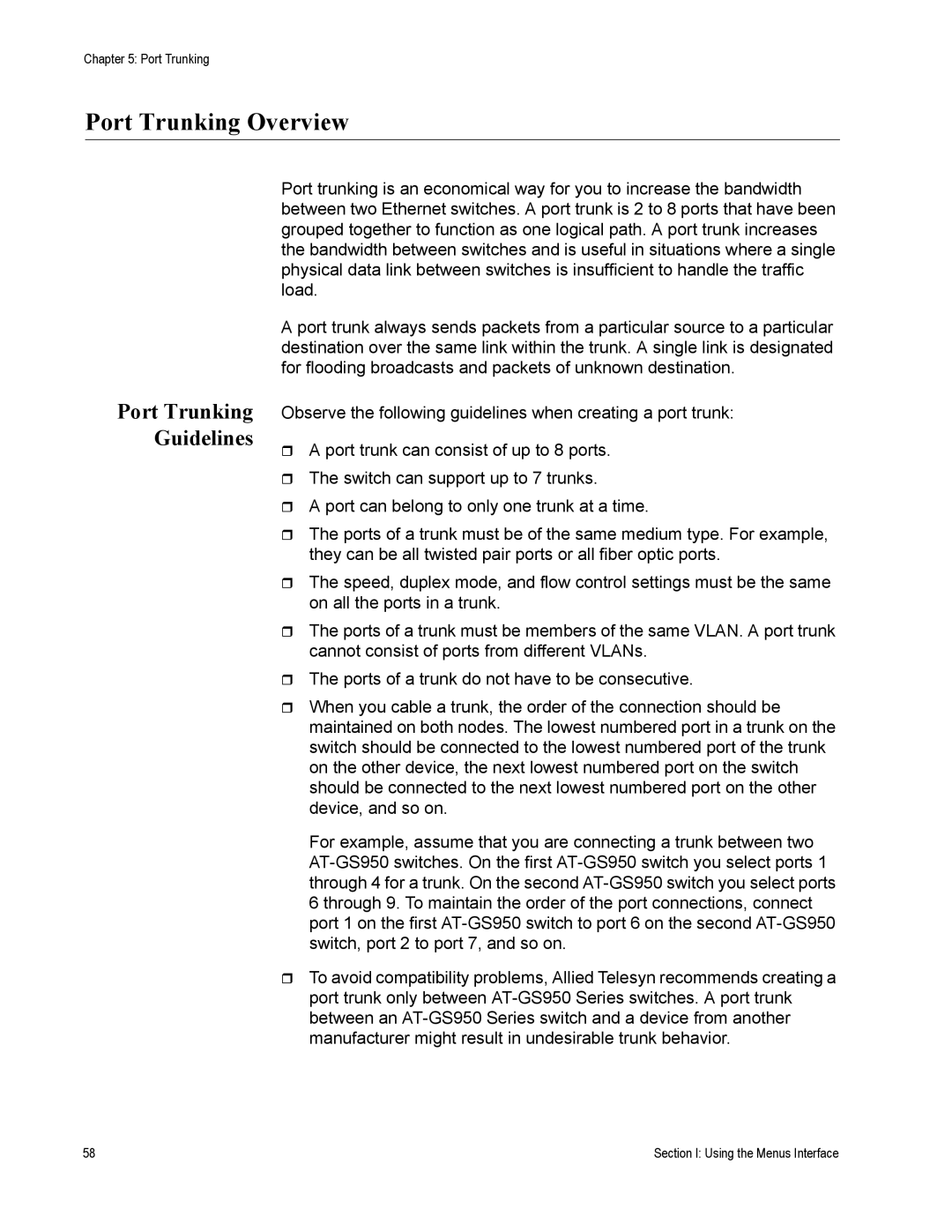Chapter 5: Port Trunking
Port Trunking Overview
Port Trunking Guidelines
Port trunking is an economical way for you to increase the bandwidth between two Ethernet switches. A port trunk is 2 to 8 ports that have been grouped together to function as one logical path. A port trunk increases the bandwidth between switches and is useful in situations where a single physical data link between switches is insufficient to handle the traffic load.
A port trunk always sends packets from a particular source to a particular destination over the same link within the trunk. A single link is designated for flooding broadcasts and packets of unknown destination.
Observe the following guidelines when creating a port trunk:
A port trunk can consist of up to 8 ports.
The switch can support up to 7 trunks.
A port can belong to only one trunk at a time.
The ports of a trunk must be of the same medium type. For example, they can be all twisted pair ports or all fiber optic ports.
The speed, duplex mode, and flow control settings must be the same on all the ports in a trunk.
The ports of a trunk must be members of the same VLAN. A port trunk cannot consist of ports from different VLANs.
The ports of a trunk do not have to be consecutive.
When you cable a trunk, the order of the connection should be maintained on both nodes. The lowest numbered port in a trunk on the switch should be connected to the lowest numbered port of the trunk on the other device, the next lowest numbered port on the switch should be connected to the next lowest numbered port on the other device, and so on.
For example, assume that you are connecting a trunk between two
To avoid compatibility problems, Allied Telesyn recommends creating a port trunk only between
58 | Section I: Using the Menus Interface |
